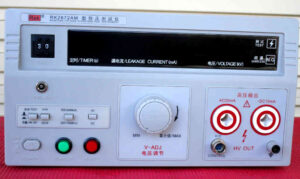Buying Chinese batteries is a minefield. Experience has been that they rarely meet specified capacity, and less that 10% of specified capacity is not that unusual.
So, with that background I searched eBay for replacement batteries for a Makita drill / driver. The current pair of batteries are Chinese source, purchased about 5 years ago, label rating is 2.0Ah, and measured capacity now is 1.3-1.4Ah… which is not too bad, they were 1.7-1.8Ah when new (yes, below spec).
There were very many sellers selling a lot of two packs rated at 3.6Ah for around $34 including delivery. That is very cheap, too good to believe? Let’s rely on eBay Buyer Protection to put them to the test.
The two batteries arrived quickly and were put through charge / discharge cycles to condition them.

Above are the C/5 discharge curves for both batteries on the third cycle, capacity is 1.3Ah, just 36% of the label rating. Continue reading Chinese batteries – replacements for Makita 1220 battery pack
Last update: 10th November, 2021, 3:25 PM









